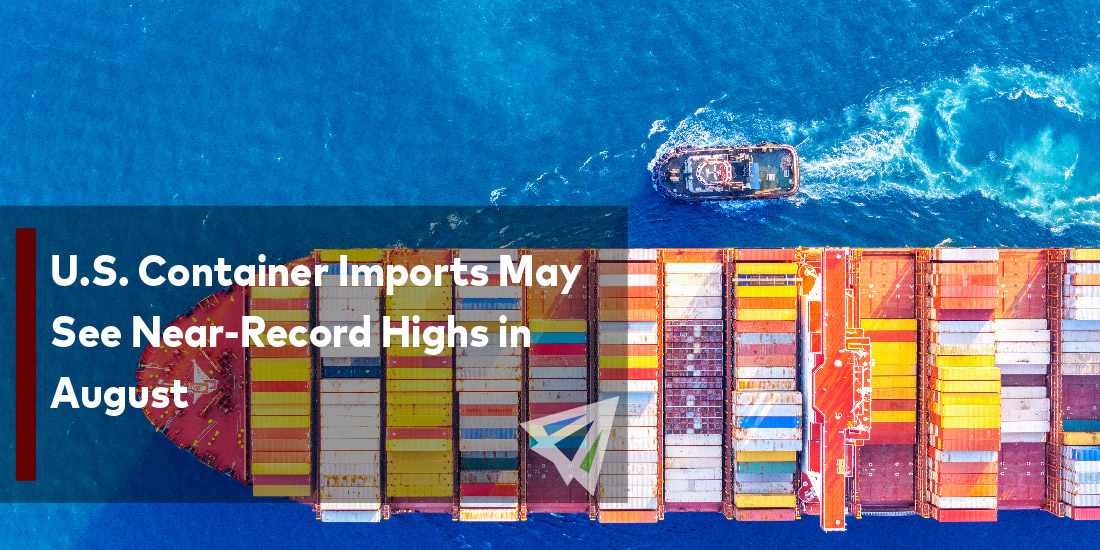According to retailers, U.S. container imports are expected to reach all-time highs by the summer of 2024, driven by a labor conflict that could potentially disrupt important ports on the East and Gulf coasts. Retailers are increasing the speed at which they transport their goods in an effort to prevent supply chain disruptions, especially as the holidays get near. Due to this calculated change in import timetables, container traffic has increased dramatically, with an almost record-breaking amount of commodities expected in August.
New Contracts Underway
The International Longshoremen’s Association (ILA) and the United States Maritime Alliance (USMX) are negotiating a contract that is scheduled to expire on September 30. This is the source of anxiety. In the event that a new deal isn’t reached in a timely manner, the ILA has stated that they are ready to go on strike. The talks have stagnated. Retailers now feel compelled to bring their products into the country before the situation worsens because of the approaching deadline.
Through their monthly Global Port Tracker (GPT), the National Retail Federation (NRF) and Hackett Associates have been closely observing the situation. According to their reports, the increase in imports is a direct reaction to any possible labor unrest. Actually, in an effort to reduce any risks related to the labor conflict, a number of merchants started to increase their shipments as early as June—well before the customary peak shipping season.
Threat of Strikes, Shipping Route Hazards, and Other Difficulties Affect Import Quantities
Vice president of supply chain and customs policy at NRF Jonathan Gold stressed the possible effects of a strike, warning that it might have dire repercussions for the economy. In response, retailers have diversified their shipping routes; as a precaution, several have chosen to divert freight to ports along the West Coast. This change is a tactical measure to prevent the traffic jams and delays that have beset ports on the East and Gulf coasts in recent months, in addition to being a reaction to the labor conflict.
Apart from labor problems, there have been other contributing factors to the rise in import quantities. Shipping logistics have become more complex due to global supply chain interruptions, such as attacks on commercial vessels in the Red Sea and equipment shortages at Asian ports. Due to these difficulties, businesses have had to move quickly to make sure that their inventory is fully stocked before the crucial holiday season.
The founder of Hackett Associates, Ben Hackett, observed that there has been a notable change in freight to the West Coast. West Coast ports are processing more than 50% of the cargo tracked by GPT for the first time in more than three years. This demonstrates unequivocally that retailers are considering the possibility of labor disruptions carefully and are acting strategically to protect their supply networks.
Due to the front-loading of shipments earlier in 2024, some industry analysts had expected a decrease in imports during the second half of the year; however, the NRF and Hackett Associates have changed their projections. They now predict that import levels will be high through the end of the year, with August probably seeing a 19.2% rise over last year. Although at a slower rate, growth is also anticipated in September and October as businesses continue to get ready for the Christmas shopping season.
Going forward, the GPT projects that U.S. imports will continue to be robust until at least early 2025; the next big event that may affect shipping patterns is the Lunar New Year holiday in Asia. A temporary decline in production and exports may result from the one- to two-week holiday shutdown of many Asian firms.
In Conclusion
Merchants now feel compelled to import more containers due to the possibility of labor disruptions at U.S. ports. Retailers are not taking any chances while the ILA and USMX negotiations are still ongoing and the situation is still unstable. Regardless of what transpires at the negotiation table, they are trying to make sure that their items reach customers in time for the holidays by speeding up shipments and rerouting cargo. Whether these tactics succeed or if the labor conflict results in the kind of disruption that merchants are frantically hoping to avoid will be determined in the upcoming months.
Interlog continues to stay up to date on this and the latest in the market, to provide our customers and readers with the latest industry news. Should you have any questions regarding this, please reach out to our team today.
Additionally, we have weekly market updates that provide relevant freight news, updates, developments across the industry, and more.
